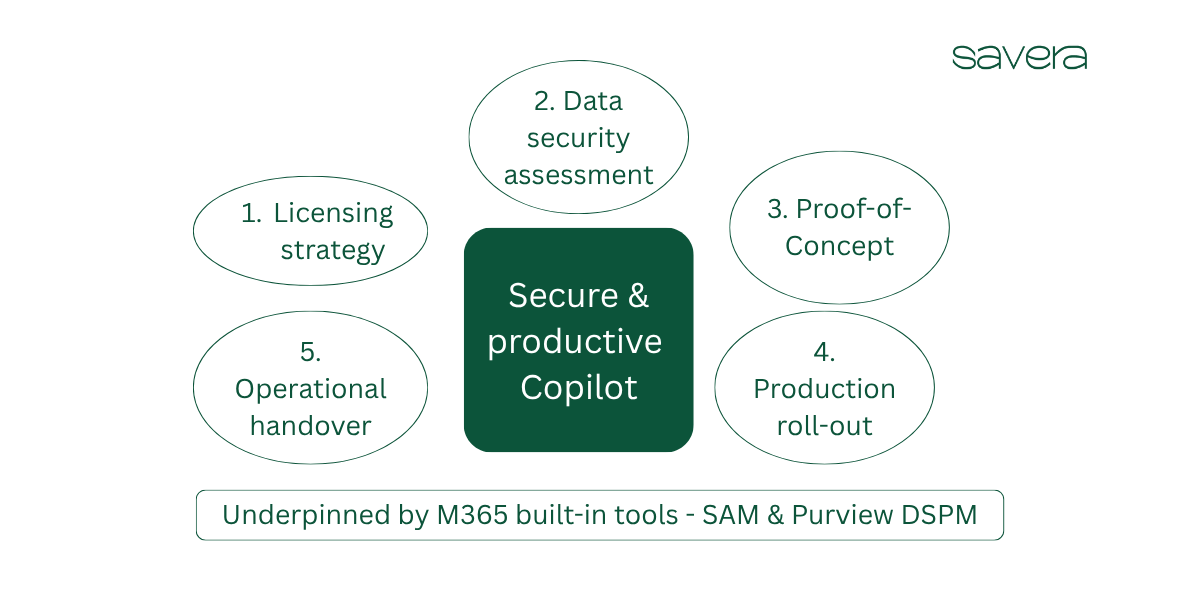Microsoft 365 Copilot Deployment and Governance.
Are you prepared for Copilot? What happens if your staff prompts Copilot for sensitive data, such as executive salary packages or a planned restructure?
Secure and productive Copilot
SAVERA follows Microsoft’s latest best practice guidance for deploying and governing Copilot. We assess your environment using built-in tools such as SharePoint Advanced Management (SAM) and Purview Data Security Posture Management (DSPM). Based on a thorough analysis of your requirements, we design a tailored rollout plan that aligns with your timelines and budget—while ensuring robust data security, privacy, and governance.
Core Deliverables
Copilot Licensing Strategy
We help determine the most suitable licensing model for your organisation—whether it's per-user Microsoft 365 Copilot plans or the Pay-as-you-go Copilot Chat subscription—based on usage requirements and budget considerations.Data Security Assessment
We evaluate your existing M365 environment to identify risks such as oversharing—where sensitive content is broadly accessible due to open permissions, yet mistakenly considered secure because it's not widely known. This “security by obscurity” is addressed through targeted remediation.Proof-of-Concept (PoC)
A PoC is essential to validate Copilot within your environment using defined guardrails:Users: A cross-functional team including IT, Security, Legal, and Privacy.
Data: Controlled access to either the full SharePoint estate or selected sites.
Agents: Identification and configuration of Copilot agents to enable or disable.
Audit & Reporting: Activation of monitoring tools to track usage, interactions, and uncover potential security or privacy vulnerabilities.
Production Roll-Out
Full-scale rollout to a broader user base, supported by comprehensive training and documentation to ensure adoption and responsible usage.Operational Handover
Transition to your internal teams for ongoing support, with clear operational guidelines and governance controls in place.

